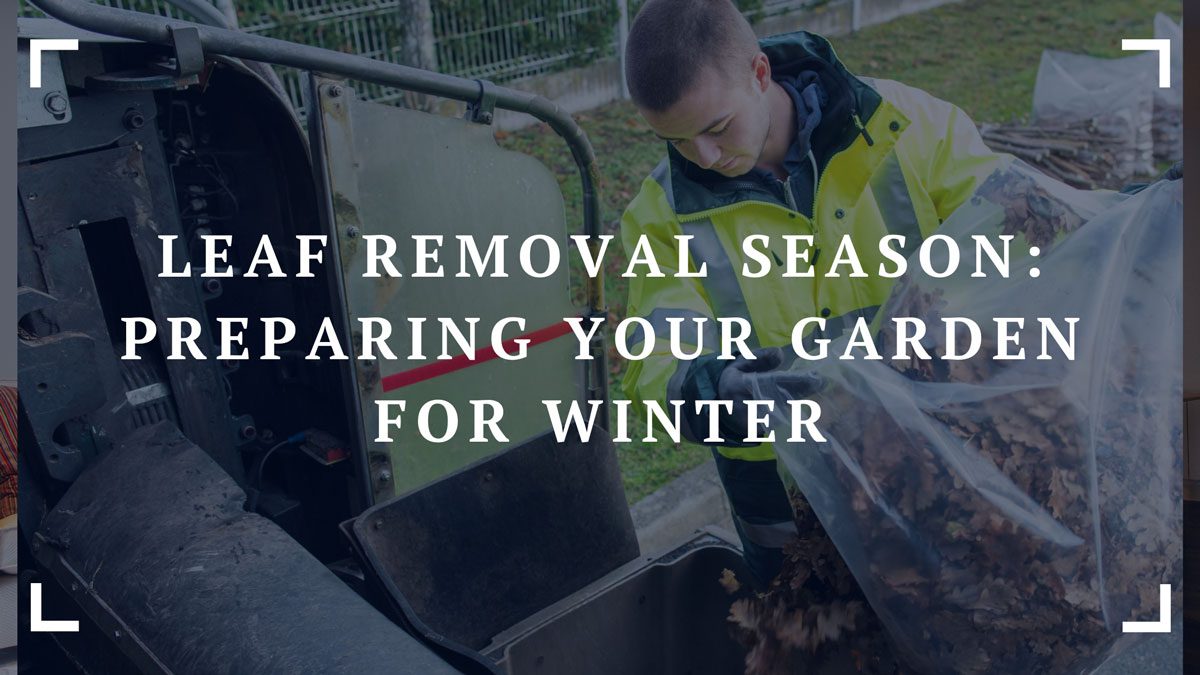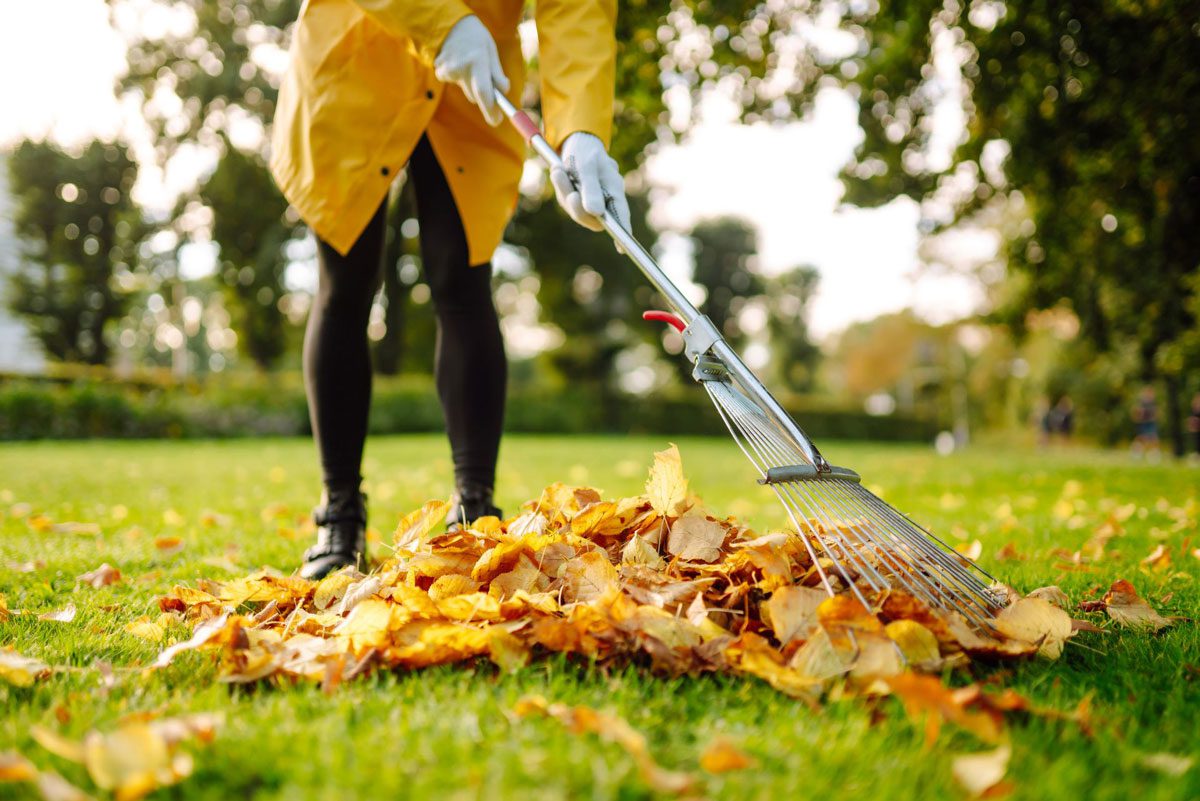As the days grow shorter and temperatures drop, it’s a clear sign that winter is on its way. For garden enthusiasts, this signals the start of leaf removal season, a crucial step in preparing your garden for the challenges of the cold months ahead. Properly clearing fallen leaves from your garden is not only aesthetically pleasing but also essential for the health and vitality of your plants.
Explore below the importance of leaf removal and provide a comprehensive guide on preparing your garden for winter.

The Importance Of Leaf Removal
Before going into the specifics of leaf removal, it’s essential to understand why it’s such a vital task in garden maintenance:
- Prevent Pest And Disease Issues: Fallen leaves create a cozy, protective environment for pests and diseases to thrive. Moisture trapped beneath the layers of leaves can encourage mold and fungal growth, which can quickly spread to your plants. By removing leaves promptly, you can reduce the risk of these problems.
- Maintain Soil Health: Leaves, when left to decompose on the ground, can become compacted, reducing the soil’s ability to breathe. This can hinder root growth and nutrient uptake for your plants. Removing leaves ensures that your soil remains healthy and well-aerated.
- Promote Grass Health: If you have a lawn, allowing leaves to accumulate can smother your grass and create dead patches. Regular leaf removal helps your lawn thrive and minimizes the need for costly reseeding come spring.
- Enhance Aesthetics: A well-kept garden with cleared pathways and beds looks better and provides a safer environment for walking and gardening. It’s an essential aspect of winter garden maintenance.
Leaf removal is vital for preventing pests, maintaining soil health, promoting a healthy lawn, and enhancing the beauty and safety of your garden. While doing it yourself can be rewarding, hiring a professional leaf removal service offers significant advantages.
Professionals save you time and effort, especially if you have a large garden or limited mobility. They come prepared with the right tools and can properly dispose of leaves, contributing to a more sustainable approach to garden maintenance. This gives you more time to focus on other essential winter preparations and enjoy your garden’s beauty without the hassle.
How To Prepare Your Garden For Leaf Removal

Before you start the leaf removal process, it’s essential to make some preparations:
1. Gather The Necessary Tools
Assemble the tools for leaf removal, including rakes, leaf blowers, tarps, leaf bags, and gloves. Having these items at hand will streamline the task.
For instance, opt for rakes with adjustable tines, which allow you to customize the width for different garden areas. Consider using a leaf blower with mulching capabilities to reduce the volume of leaves. Large, durable tarps make transporting leaves to your disposal area easier. Quality leaf bags with reinforced bottoms prevent tearing, making bagging leaves smoother.
2. Check The Weather Forecast
Monitor the weather forecast and choose a dry day for leaf removal. Wet leaves can be heavy and more challenging to work with, and wet soil may become compacted, potentially harming your garden’s soil structure. Selecting a day when the ground is relatively dry but the leaves are not too dry (to avoid excessive dust) ensures optimal conditions for leaf removal.
3. Plan Your Approach
Before you start removing leaves, plan your approach. Consider starting from the outer edges of your garden and working your way toward the center. This systematic approach helps you cover all areas efficiently, avoiding the need for repeated work.
4. Wear Appropriate Gear
Dress in comfortable, weather-appropriate clothing, such as layers to adapt to changing temperatures. Sturdy gloves protect your hands and provide a good grip on tools. If you’ll be using a leaf blower, safety goggles or protective eyewear shield your eyes from flying debris.
5. Inspect And Maintain Equipment
Before you begin, inspect your tools and equipment to ensure they are in good working condition. Check for loose or damaged parts and replace or repair them as needed. Dull rake tines or clogged leaf blower vents can slow down the process and lead to frustration.
6. Clear Pathways
Ensure that pathways in your garden are clear and accessible. Removing obstacles and debris from paths makes transporting leaves to your designated disposal area easier.
7. Designate Disposal Areas
Set up designated areas where you’ll dispose of the collected leaves. Consider composting leaves if they’re not diseased, using a leaf shredder to reduce their size. To improve soil health, you can also mulch leaves directly into your garden beds. If bagging leaves for municipal collection, have enough leaf bags or containers ready for efficient disposal.
8. Protect Delicate Plants
Some plants thrive in any climate. However, if you have fragile or sensitive plants in your garden, consider covering them with burlap or frost blankets before leaf removal. This protects them from potential damage during the leaf removal process.
9. Coordinate With Municipal Services
If your community offers curbside leaf collection, check the schedule and guidelines for leaf pickup. Make sure your leaves are prepared and placed according to the specified guidelines to avoid any issues.
10. Safety First
Prioritize safety during leaf removal. Be aware of potential hazards such as slippery leaves, uneven terrain, and power equipment. Take precautions such as wearing appropriate footwear with good traction and using tools safely to prevent accidents and injuries.
11. Consider Mulching
If you have a mulching mower, plan to use it to shred leaves and leave them on your lawn finely. This natural mulch provides nutrients to the soil as it decomposes.
By carefully considering and implementing these preparation steps, you can ensure that your leaf removal process is efficient, safe, and beneficial for your garden’s health.
Conclusion
Leaf removal season is a critical part of preparing your garden for winter. By understanding the importance of this task and following the proper steps, you can ensure that your garden remains healthy and vibrant throughout the cold months. Remember that winter garden maintenance is an ongoing process, so stay vigilant and proactive to enjoy a beautiful and thriving garden come spring.


